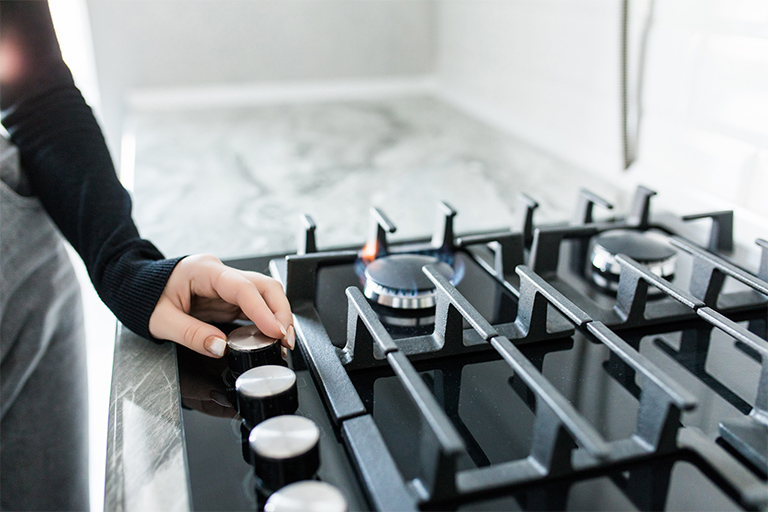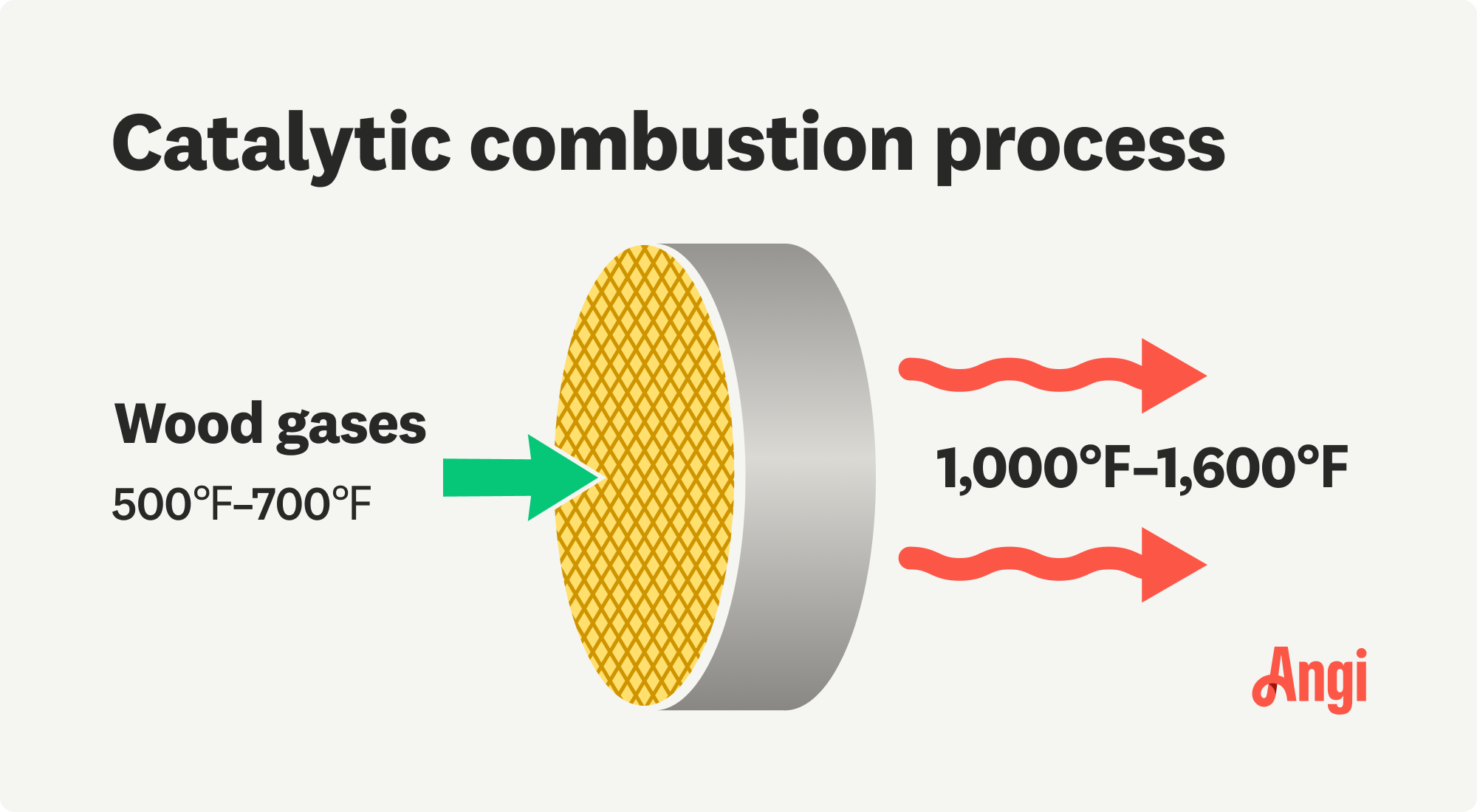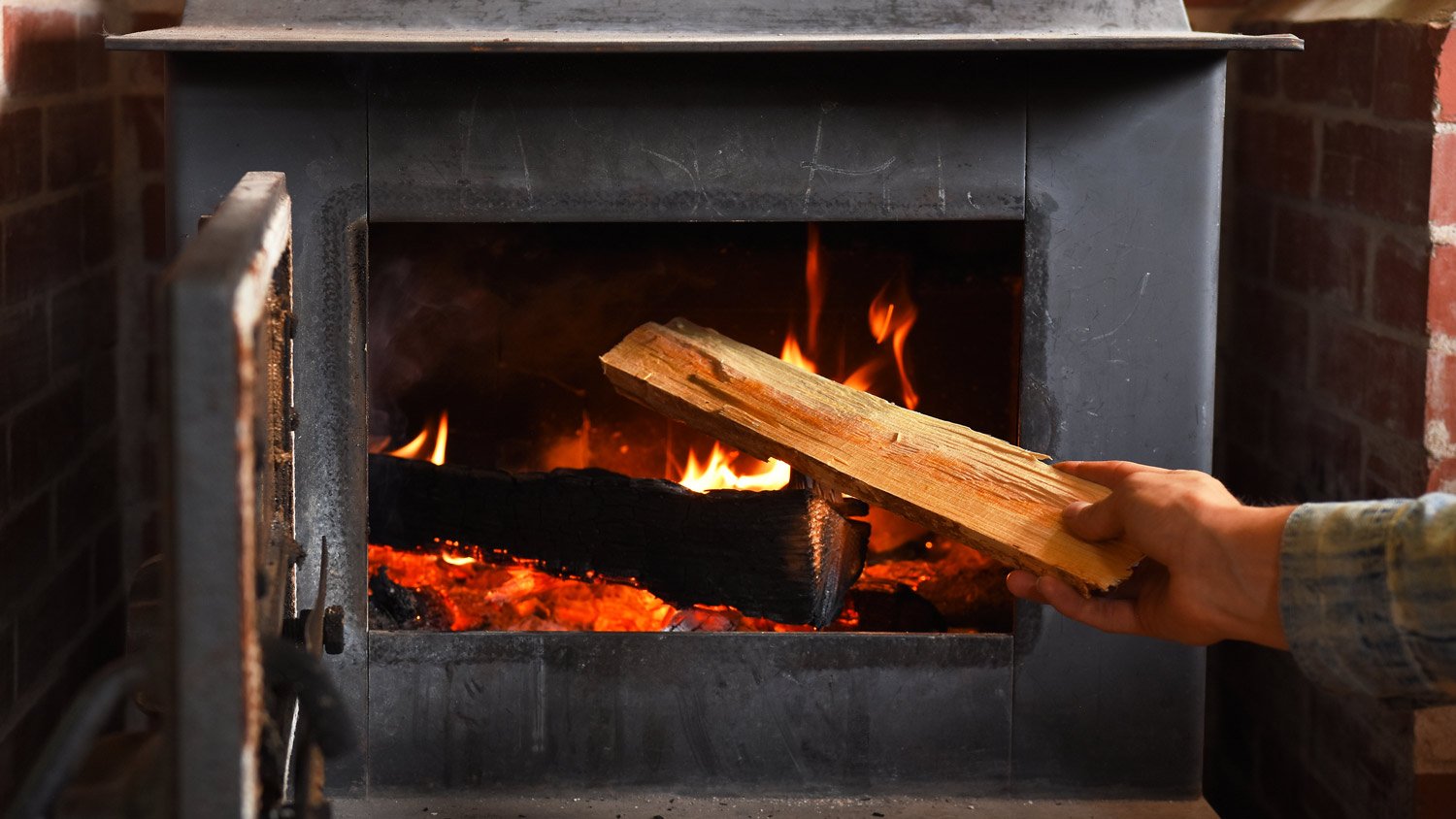
Discover the cost to install a gas cooktop. Learn about average prices, key cost factors, and tips to save on your gas cooktop installation project.
It’s a hotly contested debate


Catalytic wood stoves have a catalytic combustor, but non-catalytic stoves don’t.
Catalytic stoves are more efficient and better for the environment.
Non-catalytic stoves are more affordable and easier to use.
Catalytic stoves can serve as a primary heating source, and non-catalytic stoves are better for supplementary heating.
Want to warm up your house with a cozy wood-burning stove? You’ll need to choose between the two main types: catalytic and non-catalytic. So, how do these stove styles compare? Let’s break down the pros and cons of catalytic versus non-catalytic wood stoves.

When it comes to catalytic versus non-catalytic wood-burning stoves, the main difference is their design. Catalytic wood stoves have an extra component—called a catalytic combustor or catalyst—that makes them more energy efficient, eco-friendlier, and costlier than their non-catalytic counterparts. On the other hand, non-catalytic wood stoves are less expensive and easier to operate but generate more emissions. Both models should be installed by a wood stove company near you rather than DIYed.
A catalytic stove is a modern type of wood-burning stove that produces less smoke and fewer emissions than traditional wood stoves. It achieves this by burning wood to create smoke and then sending that smoke through a catalytic combustor for a second round of burning. This honeycomb-like component ignites the smoke and turns it into usable heat.
| Pros | Cons |
|---|---|
| More efficient than non-catalytic stoves | Pricier |
| Better for the environment | Harder to operate |
| Can achieve longer burn times | Require more maintenance |
Best for:
Anyone who uses their wood stove as a primary heating source
People who want to reduce their environmental impact
Folks who don’t mind putting in extra work for longer burn times and higher heat output
Catalytic wood stoves are more efficient than non-catalytic models, meaning that they can produce more heat from less firewood. If you choose a catalytic stove over a non-catalytic one, you can save money on wood and spend less time replacing the logs in your fire.
Hardwoods like ash, oak, and birch are the best types of wood for a wood-burning stove. They often have a pleasant smell and burn for a long time.
Additionally, catalytic stoves generate less smoke and fewer emissions than non-catalytic wood-burning stoves, which is better for the environment. They also offer longer, more stable heat output.
With their extra efficiency and longer burn times, it’s probably no surprise that catalytic stoves cost more than non-catalytic versions. They’re trickier to use, as well, because they require you to open and close a bypass damper to control the fire.
Also, while the catalytic combustor has its advantages, it can wear down over time and need replacement. If you use and maintain a catalytic wood stove properly, the catalyst can last for at least six heating seasons, according to the U.S. Environmental Protection Agency (EPA). But without regular cleaning and upkeep, it may stop working in just two years.
Non-catalytic stoves make up the majority of wood-burning stoves on the market. To create warmth, these stoves burn wood and then use air to reignite the gases from the burning wood, which produces additional heat. Rather than a catalytic combustor, a non-catalytic wood stove uses a baffle to redistribute gases throughout the stove—resulting in extra combustion and higher temperatures.
| Pros | Cons |
|---|---|
| Less expensive | Not as efficient as catalytic wood stoves |
| Flames are more visible | Don’t burn as cleanly |
| Easier to use and maintain | Burn times are shorter |
Best for:
Anyone who prefers an easy-to-use wood-burning stove
People living in milder climates who only use a wood stove for supplementary heating
Budget-conscious individuals who don’t need the most technologically advanced stove
Non-catalytic wood stoves are more affordable to install than catalytic stoves. They also produce larger, more visible flames, which should appeal to people who enjoy the look of a traditional wood-burning fire.
Non-catalytic wood-burning stoves are easier to use than catalytic ones because there’s no need to adjust the bypass to start or manage the fire. Plus, the lack of a catalytic combustor means that non-catalytic stoves have one less wood stove part that can break and require maintenance.
Since non-catalytic wood stoves aren’t as efficient as catalytic versions, they’ll go through more firewood, increasing your operating expenses. And with shorter burn times, you’ll need to replenish the logs more frequently.
On top of that, these types of wood stoves produce more smoke and particulate emissions than their catalytic cousins, making them less eco-friendly. Despite this, many non-catalytic wood stoves still meet efficiency requirements set by the EPA.

One kind of stove isn’t necessarily better than the other, but each type has its strengths. Here’s how non-catalytic versus catalytic wood stoves compare in terms of appearance, cost, and more.
From an aesthetic standpoint, catalytic and non-catalytic wood stoves are quite similar. The main difference is that non-catalytic models produce larger flames, so they’re a better choice if you like the look of a powerful wood-burning fire.
Wood-burning stove prices vary by heating capacity, brand, and other factors, but catalytic stoves often cost more than non-catalytic models.
Catalytic stoves are better for the planet because they use less firewood and release fewer emissions than non-catalytic stoves.
From average costs to expert advice, get all the answers you need to get your job done.

Discover the cost to install a gas cooktop. Learn about average prices, key cost factors, and tips to save on your gas cooktop installation project.

If your refrigerator has been damaged, refrigerator door dent repair cost will vary based on the imperfection's size, depth, and location. Use our guide to estimate how much you'll spend on refrigerator dent repair.

Garbage disposals last five to 10 years, and replacement is preferred over repairs. Here’s everything you need to know about replacing your garbage disposal.

Dealing with a clogged dishwasher? Use this guide on how to drain a dishwasher to empty it and clear out any debris that’s causing a backup.

You can replace a heating element in an oven in less than one hour by shutting off power, removing screws, and swapping it out after checking for continuity.

Short on kitchen counter space? Learn how to install a microwave over a stove in 10 simple steps in this how-to guide.